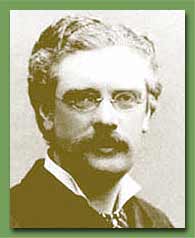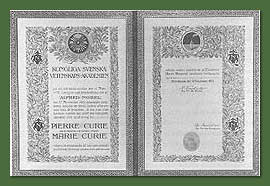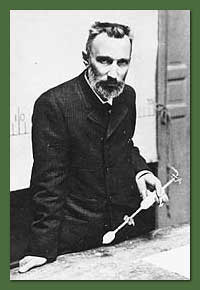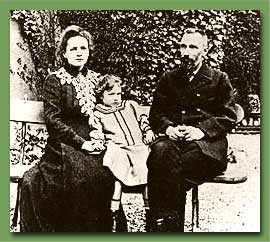
 |
|

In a 1903 letter to Swedish mathematician Magnus Goesta Mittag-Leffler, Pierre wrote, “If it is true that one is seriously thinking about me [for the Nobel Prize], I very much wish to be considered together with Madame Curie with respect to our research on radioactive bodies.” The Nobel Prize and Its Aftermath ARIE WAS NOT REALLY NOMINATED for her first Nobel Prize. From the inception of the award in 1901, the Nobel Prizes have been made after a lengthy evaluation of the merits of nominees. In 1903 the French Academy of Sciences nominated Henri Becquerel and Pierre -- but not Marie -- Curie as candidates for the physics prize. If not for the intervention of a member of the nominating committee, Swedish mathematician Magnus Goesta Mittag-Leffler, Marie might have been denied recognition for her work. But Mittag-Leffler, an advocate of women scientists, wrote Pierre advising him of the situation. In his reply Pierre made clear that a Nobel Prize for research in radioactivity that failed to acknowledge Marie's pivotal role would be a travesty. Some strings were pulled, and a nomination of Marie Curie in 1902 was validated for 1903. In December 1903, Becquerel and both Curies were awarded the Nobel Prize for Physics. The Curies' citation was carefully worded to avoid specific mention of their discovery of polonium and radium. Chemists on the nominating committee had insisted that the Curies might in the future deserve a Nobel Prize for Chemistry for their discovery of those elements. And there remained some doubts about the elements, which had been isolated only in invisibly small amounts. Thus their physics prize mentioned only their collaborative work on Becquerel rays. 
The certificate for the Curies' 1903 Nobel Prize for Physics cited “their joint researches on the radiation phenomena discovered by Professor Henri Becquerel.” (Photo ACJC) 
By the time Pierre took up his duties as a professor at the Sorbonne, where he is shown here teaching, he complained of having only “a very feeble capacity for work.” (Photo ACJC) HE CURIES FELT TOO ILL AND TOO BUSY to travel to Stockholm for the awards ceremony that December (besides, Pierre depised ceremonies and publicity). Nobel laureates, however, were required to present a lecture describing their work's importance. In June 1905 the Curies finally made the trip. Custom dictated that Pierre deliver the lecture, but he was careful to distinguish between Marie's independent work and their joint efforts. After surveying the science of radioactivity, he added a cautionary note. Radium, like other scientific and technological discoveries (such as Nobel's explosives), might prove very dangerous in the wrong hands, “and here we must ask ourselves if humanity can benefit by knowing the secrets of nature...or if this knowledge will not be harmful to the world.” But he ended his talk optimistically. “I am one of those who believe with Nobel that mankind will derive more good than harm from the new discoveries.”--Pierre Curie, Award Address for 1903 Nobel Prize for Physics Not surprisingly, the award brought changes in the Curies' lives. The prize money was very useful. They used some of it to cover the expenses of treating pitchblende, and they could hire a paid lab assistant for the first time. Pierre's scientific achievement was finally acknowledged in his native country with an appointment to a professorship at the Sorbonne. Yet it was only after Pierre rejected the first offer, which came without provisions for a lab, that the university dug up the necessary funds. Marie, for the first time in her career, would have both a title--chief of laboratory--and a university salary. “It was not without regret that we left the School of Physics,” she recalled, “where we had known such happy work days, despite their attendant difficulties.” Although Pierre began his new position in the fall of 1904, the lab was not actually completed until 1906. Marie remained sensitive to these slights against Pierre's dignity. TOOK A HEAVY TOLL on the Curies in the wake of their new international acclaim. Accustomed to working quietly and without distraction in their lab, they were now prey to journalists and photographers, who pursued them both at work and at home. Not even six-year-old Irène was safe from their prying eyes. Pierre found that the unwanted intrusions destroyed his productivity. Although he had published 25 papers between July 1898 and June 1904, he published nothing in the following two years. Even his election in July 1905 to the French Academy of Sciences, which had rejected his candidacy earlier, did little to improve his frame of mind. 
The expectant mother with Irène and Pierre in their garden, 1904 (Photo ACJC)
Marie, too, complained about the loss of privacy. But having too much to do seemed to energize, not enervate, her. In December 1904, a month after their move to the Sorbonne, the Curies' younger daughter, Eve, was born. Although Marie took some time off from her professional commitments, she soon resumed both her research and her teaching at the teachers' training institute for women at Sèvres. While carefully rationing the time she would spend with journalists, she attempted to explain to the public what the new discoveries meant. She even found time for museums and concerts, where Pierre joined her without enthusiasm. Next: © 2000 - American Institute of Physics |